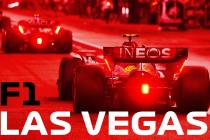Roundabouts save time, fuel
You're sitting at red light that seems to last forever.
It might only be 30 seconds, but the 50 cars in front of you have to first get rolling once the green flashes. You watch in utter agony as the procession chugs to life, each driver taking an extra second to react to the driver in front pulling away. It's like watching a game of motorized dominos. Just as it's your turn to make it through the intersection, the light turns red again. Great.
Funny thing is, however, this time there's no other traffic. Now you're just sitting there burning gasoline, time and patience for no real reason other than the fact the very expensive stoplight is completely oblivious -- or indifferent -- to the traffic situation. It's frustrating and wasteful enough, made worse by the fact that it's likely not the last time it's going to happen to you in the next 10 minutes.
Assuming that you'll catch a red light half the time at every intersection -- and green the other half, of course -- how much waste is created slowing down, stopping, waiting, then accelerating for one out of every two intersections?
Our cities were formed well before the automobile, based on gridded streets. As cars came on stream, it likely made sense to erect traffic-control signs to curb the chaos of people on horses, riding bicycles, steering ox carts and driving cars all heading in different directions through the same intersections.
A commute through downtown Los Angeles or in Manhattan (yes, I've done both) is enough to wear anyone's patience thin for the simple fact that it might take you an hour or two to travel a very short distance. But it's not just a big-city problem anymore. Congestion is everywhere.
You can blame traffic-control systems and standard four-corner intersections for a lot of it, and for whatever reason, the fact that we all need to go to work and head home at exactly the same time as each other. You know that giant gap between the city and highway fuel-economy ratings of your vehicle? These two factors are why it exists.
While automakers squirm under tightening federal-government fuel-economy regulations (Big Business is an easy political target, after all), we as drivers are not required to care about commuting more conservatively and municipal governments are not tasked with updating antiquated and inefficient infrastructure that's just as much to blame for waste as the very automobiles that that infrastructure was built to accommodate.
Most intersections with traffic lights are inefficient, yes, but four-way stops -- when no one else is at them but you -- could very well be the most outdated and inefficient form of road control there is. At a typical four-corner road junction, stop signs are an absolute necessity, however, because many drivers are generally complacent by nature -- and are poor judges of distance and speed -- and routinely drive through unmarked intersections without even looking. You disagree? Look how many people run red lights -- intersections with controls -- every day, causing crashes.
The problem is that our streets cross each other, plain and simple. We're so used to it, we don't even realize how much of a problem it really is. Other than building two planes of traffic -- a webbing that criss-crosses over and under -- it's much more effective to build traffic circles, aka roundabouts.
A recent trip to Italy brought to light just how efficient traveling in a circle can really be.
The idea is simple. Instead of a four-corner intersection with traffic lights and stop signs, there's a traffic loop you merge into. The rules are intuitive enough: Traffic already in the circle has the right of way, which means you wait for an opening before jumping in. If there's no one, you go. If there's someone (or multiple someones) in the batting cage, as I like to call it, you pick your spot and merge. Once you're in the circle, you slingshot your way around until you hit the right exit. And you're on your way, usually without stopping.
Most roundabouts don't take up much more room that the normal intersection and they can accommodate more than four streets, although much more and it gets a little hairy in the batting cage. Best of all, the traffic flows quickly, there's no stopping when there's no other traffic. And that means less aggravation and less fuel burned. From a safety standpoint, there's less chance of a head-on crash because all the traffic is heading the same direction in the circle and there are no red lights to run.
Roundabouts won't work in every situation, especially in dense downtown areas where it's impractical and costly to convert and where there's a high volume of foot traffic that has to cross. In new construction where roundabouts make sense, perhaps the cost of the traffic lights -- somewhere between $75,000 and $750,000 depending on whose information you read -- can diverted to pedestrian bridges. Even foot traffic won't have to wait at an intersection.
It's fine and dandy that our cars are becoming more efficient -- even electric -- but there are big gains to be made in looking at all aspects of the drive, even if it means driving in circles.
Rhonda Wheeler is a journalist with Wheelbase Media, a worldwide supplier of automotive news, features and reviews. You can email her by logging on to www.wheelbase.ws/media and clicking the contact link.














